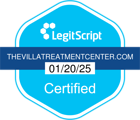Several evidence-based treatments can help you overcome marijuana addiction in 2025. Cognitive Behavioral Therapy (CBT) leads the way with success rates up to 43%, while Motivational Enhancement Therapy helps through personalized goal-setting. Medication options like Naltrexone and AEFO117 support withdrawal management, and Contingency Management provides incentives for staying clean. You’ll often get the best results by combining these approaches with a strong support network. Understanding each treatment’s unique benefits will guide you in the direction of the most effective recovery path.
Understanding Cannabis Use Disorder: Signs and Symptoms

Five key dimensions characterize Cannabis Use Disorder (CUD), a clinically significant condition requiring professional intervention. Recent prevalence trends indicate that 3 in 10 users develop dependency, with higher risks among young adults and frequent users.
The disorder manifests through distinct patterns: behavioral changes like persistent use despite consequences, physical symptoms including red eyes and coordination issues, and psychological effects such as paranoia and distorted perception. Regular users may experience decreased cognitive function through memory loss and difficulty concentrating. A concerning pattern shows individuals spending new time with other marijuana users and withdrawing from previous social connections.
You’ll notice functional impairments affecting work, school, or home life, often accompanied by failed quit attempts and tolerance development. The condition frequently presents alongside comorbid mental health conditions, complicating treatment needs.
Understanding these dimensions is essential, as rising cannabis potency correlates with increased disorder severity and treatment complexity in today’s environment.
The Role of Cognitive Behavioral Therapy in Recovery

Cognitive Behavioral Therapy (CBT) offers you a structured approach to overcome cannabis addiction through its core components of cognitive restructuring and behavioral activation.
You’ll learn to identify and challenge negative thought patterns that trigger marijuana use while developing healthier coping mechanisms and stress management techniques. Working memory damage often results from prolonged cannabis use, making CBT’s structured approach particularly beneficial. The therapy focuses on solution-based strategies to address your current challenges rather than dwelling on past issues.
Through CBT’s systematic skill-building modules, you’ll acquire essential tools for managing cravings, avoiding high-risk situations, and maintaining long-term recovery.
Core CBT Treatment Components
The foundation of marijuana addiction recovery rests on several key CBT components that work together to reshape behavioral patterns and thought processes. Through personalized trigger identification, you’ll learn to map out specific situations, emotions, and environments that spark cannabis cravings. Your therapist will guide you through collaborative treatment planning to develop targeted coping strategies for each trigger. Studies show that CBT treatments succeed at reducing both cannabis use and related problems.
You’ll master essential skills like mindfulness, deep breathing, and emotional regulation to manage urges effectively. The program emphasizes replacing cannabis use with healthy activities while building strong support networks. You’ll learn practical refusal techniques and create detailed crisis management plans to prevent relapse. The rapid treatment approach typically shows meaningful results within 16 sessions of dedicated work. CBT sessions, whether individual or group-based, adapt to your needs with varying frequencies and intensities, supported by ongoing progress monitoring and accountability measures.
Breaking Negative Thought Patterns
Breaking free from cannabis dependency requires systematic restructuring of deeply ingrained thought patterns through evidence-based CBT techniques. By recognizing unhelpful thoughts like “I need marijuana to relax,” you’ll learn to challenge these distorted beliefs and develop positive self-talk that supports recovery. With increasing THC potency in modern cannabis raising addiction risks, understanding these cognitive patterns is more critical than ever.
Your therapist will guide you through role-playing exercises to practice refusing cannabis and managing triggers effectively. You’ll conduct a thorough cost-benefit analysis of your usage, weighing short-term perceived benefits against long-term consequences. Through examining past experiences, you’ll identify patterns that have led to negative outcomes.
CBT utilizes powerful metaphors to help reframe your relationship with cannabis, such as viewing it as a “false friend” that undermines your goals. This cognitive restructuring process becomes more effective with consistent practice and extended treatment duration.
Building Long-Term Recovery Skills
Sustaining long-term recovery from cannabis use disorder hinges on mastering specific cognitive behavioral therapy (CBT) skills that target both psychological and behavioral patterns. You’ll need to develop excellent relapse prevention techniques through structured sessions that combine behavioral activation with mindfulness-based strategies. Recent treatment data shows that end-of-treatment abstinence rates vary widely from 13% to 43% when using CBT approaches. Given that young adults are most affected by cannabis use disorder, CBT sessions often focus on age-specific challenges and peer influences.
| Recovery Component | CBT Approach | Expected Outcome |
|---|---|---|
| Trigger Management | Identify external cues | Reduced usage urges |
| Lifestyle Modifications | Exercise & nutrition | Improved wellbeing |
| Coping Strategies | Mindfulness training | Better self-control |
Your success depends on consistent participation in extended CBT sessions (>4 sessions), particularly when combined with contingency management rewards for abstinence milestones. While CBT shows moderate effectiveness in early recovery, you’ll achieve ideal results by incorporating complementary approaches like motivational enhancement therapy and lifestyle modifications to address co-occurring challenges and maintain long-term sobriety.
Motivational Enhancement Therapy: A Modern Approach

Motivational Amplification Therapy (MAT) emerges as a dynamic, evidence-based approach that transforms traditional addiction treatment paradigms through its emphasis on personal agency and behavioral change. Through therapeutic alliance development, you’ll work with clinicians who employ non-judgmental feedback and reflective listening to build trust and understanding. This approach includes four targeted sessions that are customized to address your unique needs and circumstances.
MAT’s core techniques focus on resolving your ambivalence about marijuana use while strengthening your confidence in achieving sobriety. You’ll engage in structured dialogues that highlight discrepancies between your current behaviors and life goals, all while avoiding confrontational approaches that might trigger resistance. The motivational amplification therapy techniques include personalized feedback sessions, collaborative goal-setting, and strategic questioning that prompts self-reflection. This modern treatment approach has proven particularly effective for both juveniles and adults, offering a flexible framework that complements other therapeutic interventions. With cognitive behavioral therapy being a fundamental component, this approach effectively addresses the psychological aspects of marijuana dependence.
Current Medication Options for Cannabis Dependence
While behavioral therapies like MAT play a significant role in cannabis dependence treatment, pharmacological interventions offer supplementary support for managing withdrawal symptoms and preventing relapse. You’ll find several promising medications under investigation, including naltrexone, which has shown effectiveness in reducing self-administration, and AEFO117, a novel CB1 receptor inhibitor that blocks THC’s euphoric effects. Current evidence suggests that combination treatment approaches involving both behavioral and medication-based interventions yield the best outcomes. With 14 million Americans affected by cannabis use disorder, the need for effective treatments is increasingly urgent.
Clinical trial enrollment patterns suggest that personalized pharmacological approaches are gaining traction. Varenicline shows potential for nicotine-cannabis co-users, while N-Acetyl Cysteine helps manage withdrawal symptoms. However, there’s still no FDA-approved medication specifically for cannabis use disorder. Current research focuses on understanding THC’s neurobiological mechanisms and developing targeted treatments through CB1 receptor modulation and glutamatergic agents, with ongoing Stage 3 trials exploring more effective interventions.
Contingency Management: Incentivizing Positive Change
Because pharmacological treatments for cannabis use disorder remain limited, contingency management (CM) has emerged as a pivotal behavioral intervention that employs positive reinforcement to promote recovery. Through behavior-based contingencies, you’ll receive rewards like gift cards or vouchers for achieving specific treatment goals, such as maintaining abstinence or attending therapy sessions. Recent policy changes have increased the annual incentive cap to $750 for substance use disorder treatment.
CM’s effectiveness stems from its structured approach to incentive delivery methods, which can be implemented in both outpatient and telehealth settings. You’ll work with clinicians to establish measurable targets, and rewards are customized to your preferences and progress. The program often complements other treatments like CBT, creating an extensive recovery strategy. Research shows CM significantly enhances abstinence rates and treatment adherence, with benefits lasting beyond the intervention period. SAMHSA endorses this cost-effective approach for cannabis dependence treatment. Data indicates that rewards are most impactful when given in escalating amounts for consecutive positive behaviors.
Treatment Strategies for Dual Diagnosis Patients
Many individuals seeking treatment for marijuana addiction also face co-occurring mental health disorders, requiring a sophisticated dual diagnosis approach. Through comprehensive dual diagnosis assessment, treatment providers can develop holistic wellness planning strategies that address both conditions simultaneously, improving your chances of successful recovery.
Dual diagnosis treatment addresses both marijuana addiction and mental health disorders, creating a comprehensive path toward lasting recovery.
You’ll receive integrated treatment combining medical interventions, like mood stabilizers or anti-anxiety medications, with evidence-based behavioral therapies such as CBT and DBT.
Your treatment plan will incorporate adjunct therapies including mindfulness, nutrition counseling, and exercise programs to support vital mental and physical well-being.
You’ll participate in specialized rehabilitation programs that offer gender-specific treatment options and peer support networks while developing essential relapse prevention skills.
These coordinated interventions address the complex relationship between marijuana addiction and mental health conditions, maximizing treatment effectiveness.
Building a Support Network for Long-Term Success
Since establishing a strong support network markedly influences recovery outcomes, you’ll need to develop connections across multiple support pillars including professional guidance, peer relationships, and family systems. Research shows you’re twice as likely to maintain long-term recovery with extensive support compared to attempting recovery alone.
Start by engaging with professional therapists who specialize in CBT and addiction treatment while pursuing family integration through structured therapy sessions. Join community connections through 12-step programs or SMART Recovery groups, where you’ll find peer mentors with valuable lived experience.
Maintain an emergency contact list and crisis plan for immediate intervention when needed. Your support network should combine accountability partners, counselors, and sober friends who’ll guide you through triggers, celebrate milestones, and provide critical emotional stability throughout your recovery path.
How to Choose the Right Treatment Program
When choosing a marijuana addiction treatment program, you’ll need to carefully evaluate your personal circumstances, including the severity of use, daily commitments, and co-occurring conditions.
You should consider whether intensive outpatient, residential treatment, or other program structures best align with your recovery goals and lifestyle needs. Match your specific requirements with treatment centers that offer evidence-based therapies, appropriate levels of care, and specialized services that address your unique challenges.
Assess Personal Recovery Needs
Choosing the right marijuana addiction treatment program requires a thorough assessment of your personal recovery needs and circumstances. Your unique patterns of use, mental health status, and lifestyle demands will determine the most effective treatment approach. By identifying personal triggers and tailoring recovery plans to your specific situation, you’ll increase your chances of successful long-term recovery.
Evaluate your use severity by examining daily usage patterns, failed quit attempts, and withdrawal symptoms. Assess whether you’re dealing with co-occurring mental health conditions like anxiety, depression, or PTSD that require dual diagnosis treatment. Consider your schedule constraints and support system to determine if inpatient, outpatient, or intensive outpatient programs best fit your needs.
Treatment success depends on matching the program’s intensity and structure with your individual recovery requirements and circumstances.
Match Treatment to Goals
Successful marijuana addiction treatment requires aligning therapeutic approaches with your specific recovery objectives. When matching services to patient needs, consider both the severity of your cannabis use and your lifestyle constraints. Evaluate whether outpatient counseling provides sufficient support or if you’d benefit from more intensive programs like residential treatment.
Treatment intensity levels should be optimized based on factors such as your usage patterns, co-occurring mental health conditions, and available support systems. If you’re managing mild dependency, weekly outpatient sessions might suffice. However, if you’re dealing with severe addiction or concurrent disorders, intensive outpatient or residential programs offer more extensive care.
Consider whether CBT, MET, or contingency management aligns best with your recovery goals and learning style. Your chosen program should accommodate both your clinical requirements and practical circumstances.
Frequently Asked Questions
How Long Does Marijuana Stay Detectable in Urine Drug Tests?
Your urine test detection timeframes for marijuana depend heavily on your usage patterns. For single use, you’ll test positive for 1-3 days.
If you’re a moderate user (4+ times weekly), expect detection for 5-7 days.
Heavy chronic users can test positive for 30+ days since marijuana metabolite half-life extends with repeated use. The THC metabolites store in your fat cells, so your body composition and metabolism also influence how quickly you’ll clear the drug.
Can Medical Marijuana Patients Develop Addiction While Using as Prescribed?
Yes, you can develop addiction even when using medical marijuana as prescribed. Your body can build tolerance over time, requiring higher doses to achieve the same therapeutic effects.
This tolerance development may lead to physical dependence and addiction risk, particularly with long-term use. To minimize these risks, you’ll need to work closely with your healthcare provider on dosage adjustment strategies and regularly evaluate whether your use remains within therapeutic boundaries.
What Percentage of People Who Try Marijuana Become Addicted?
While you’re seeking a specific percentage, addiction risk varies extensively based on several key factors. Your epoch when preliminary using marijuana, frequency of use, and genetic predisposition all play pivotal roles.
Long-term marijuana usage patterns show that approximately 9% of users develop addiction, but this risk escalates to 17% if you start during youth. Family history of substance use and mental health conditions can also heighten your vulnerability to marijuana dependence.
Are There Genetic Factors That Increase Susceptibility to Cannabis Addiction?
Yes, you’re more likely to develop cannabis addiction if you have certain genetic predisposition factors. Research shows that 50-70% of addiction risk is inherited through your genes, particularly involving variants in the CHRNA2 and FOXP2 genes.
Epigenetic influences and environmental factors contribute the remaining risk. If you have ADHD, you’re especially vulnerable, with 10 times higher risk of developing cannabis use disorder due to shared genetic pathways.
How Does Marijuana Withdrawal Compare to Alcohol or Opioid Withdrawal?
You’ll find that marijuana withdrawal symptoms are generally milder and less dangerous than alcohol or opioid withdrawal. While you might experience irritability, sleep problems, and mood changes when quitting cannabis, these typically resolve within 1-2 weeks.
Unlike alcohol or opioid withdrawal, which can be life-threatening and require medical supervision, cannabis dependency treatment focuses mainly on behavioral therapy and support groups rather than medication. You won’t need hospitalization for marijuana withdrawal.







